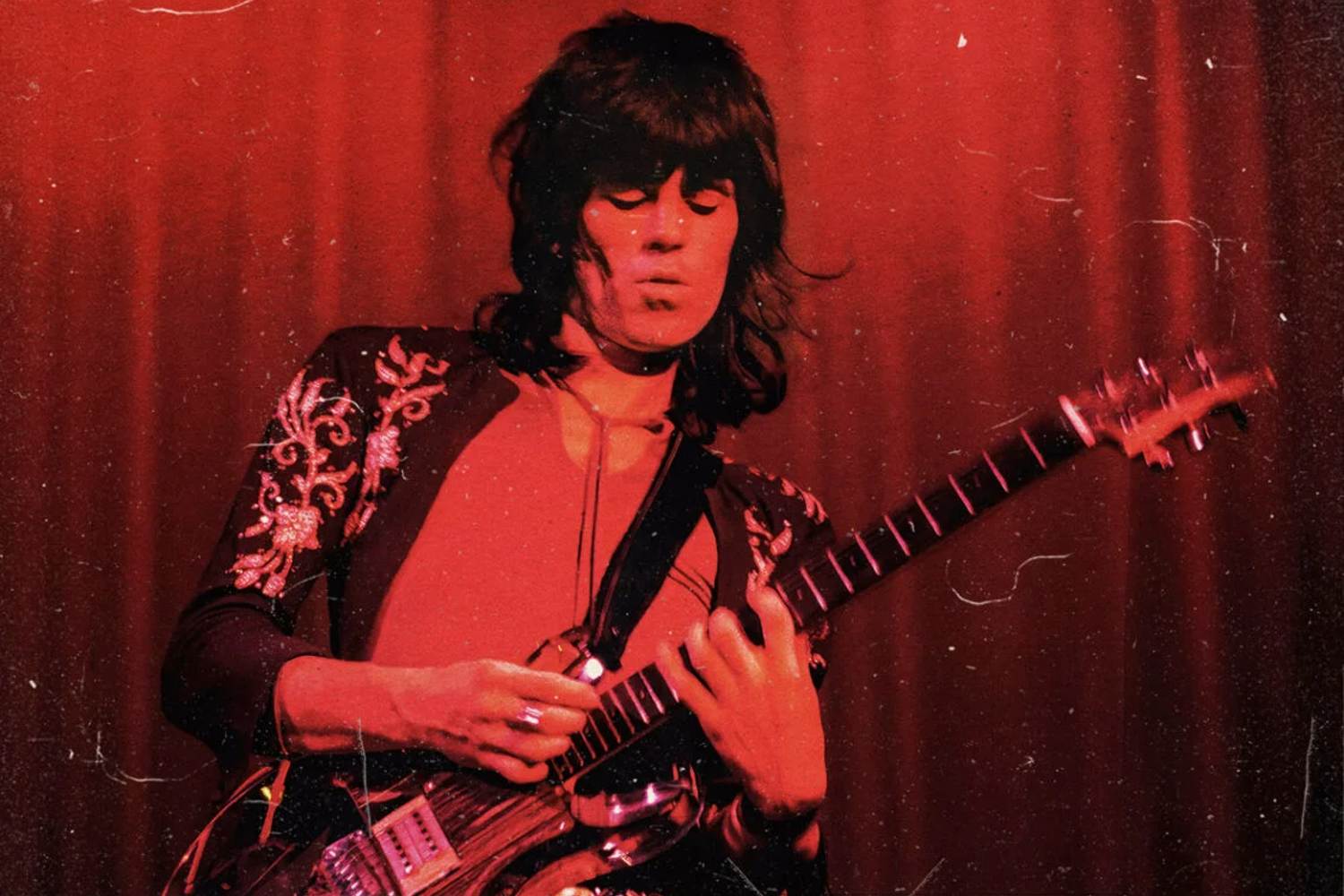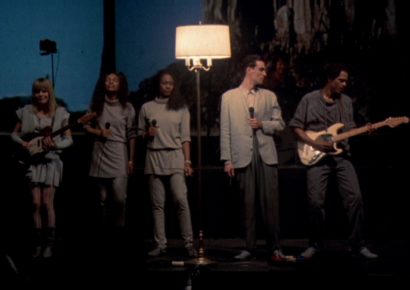What qualities land an axe a place in Keith Richards' guitar arsenal? We endeavour to find out.
Keith Richards is one of those musicians that is so damn famous, one’s hipster instinct can’t help but suggest perhaps he’s a bit overrated. And truth be told, old Keef has never been known for his virtuosity as a guitarist, he’s no shredder and he most likely does not know his modes. But, what Keith Richards can and did do, was find a magic on the guitar that was completely his own, often replicated, never duplicated and impossible to overrate. So what qualities land an axe a place in Keith Richards’ guitar arsenal? Today, we endeavour to find out.
Keith Richards
Read up on all the latest features and columns here.
Keith Richards’ use of open guitar tunings normally reserved for slide playing was a revelation for him as a rhythm player and inspired many of the Stone’s golden hits. His 5 string open G tuning, which he gleefully nicked from Ry Cooder, has a beautifully unique resonance and a drone to it that immediately identifies a guitar part as having been performed by him. The tuning also allowed Richards to think less about his fingering and focus on what truly makes him a brilliant guitar player, his timing.
Richards’ unique approach to the guitar as a tool for creating syncopated rhythms in conjunction with a drummer, namely the late Charlie Watts, is what gives the Stone’s golden era its irresistibly groovy swagger. Keef’s brilliant timing and percussive approach allowed him to bounce rhythm parts off Charlie’s snare drum to great effect, chopping and changing rhythmic patterns to create an off-kilter groove that ultimately defined the band’s sound.
Keith Richards guitar
1953 Telecaster, ‘Micawber’
This approach requires a tonal simplicity that has remained fairly consistent over Keith Richards’ guitar playing career, but where there is simplicity, there is a need for sonic precision and for good taste. And therein lies the second part of the man’s genius. Keef’s tone is as legendary as his playing and has been defined by a great number of guitars over the years, but none more so than his famous 1953 Telecaster, ‘Micawber’.
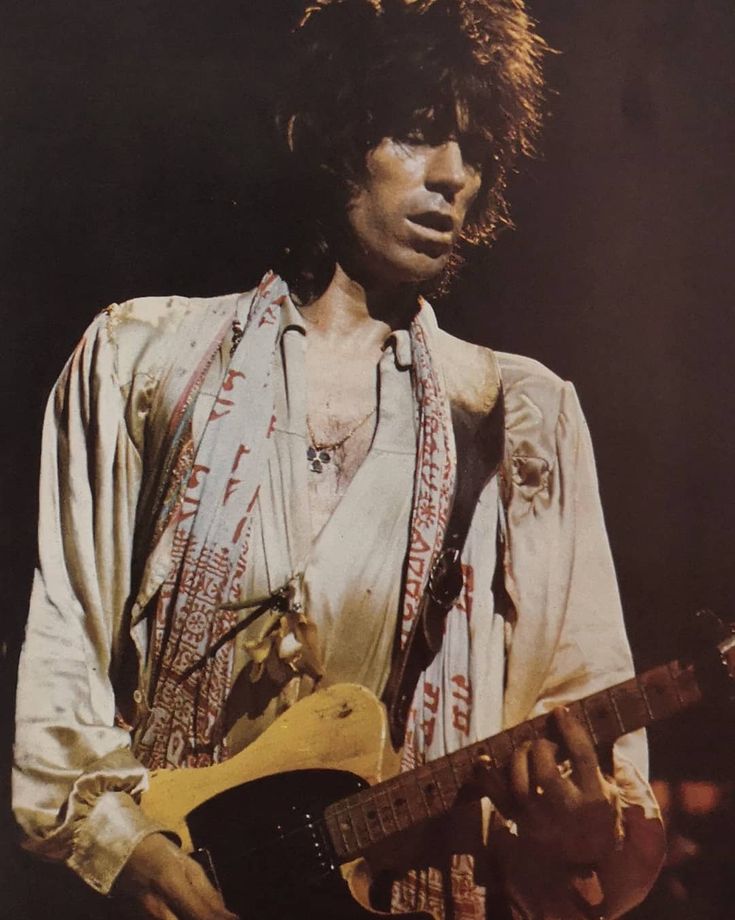
Originally gifted to Richards by none other than Eric Clapton for his 27th birthday, Richards found in the lead up to ‘Exile On Main Street’ that Micawber was the ultimate vessel for his signature bright, resonant voicings. After using Micawber on mega-hits such as “Honky Tonk Women” and “Brown Sugar” and gigging with the instrument during the Stone’s legendary tour of ‘72, Richards began making some modifications to the instrument that only increased its legendary status.
Replacing the somewhat meek Tele neck pickup with a 50s Gibson PAF Humbucker, Richards decided to put the pickup in backwards, much like the great Peter Green did, to help create an out of phase tone. He also swapped the bridge pickup for a single coil from a Lap Steel, adding to the guitar’s mysteriously unique sound.
1957 Gibson ‘Black Beauty’ Les Paul
Richards, who now has a collection of around three thousand guitars, has used a myriad of other Telecasters in his career but his most iconic instruments are an ultra-cool mixed bag. Included on that list was his 1957 Gibson ‘Black Beauty’ Les Paul Custom complete with an iconic custom paint job, added in 1967 by his then-girlfriend Anita Pallenberg. This guitar was famously stolen from Villa Nellcote during the recording of ‘Exile on Main Street’ and now belongs to a private collector.
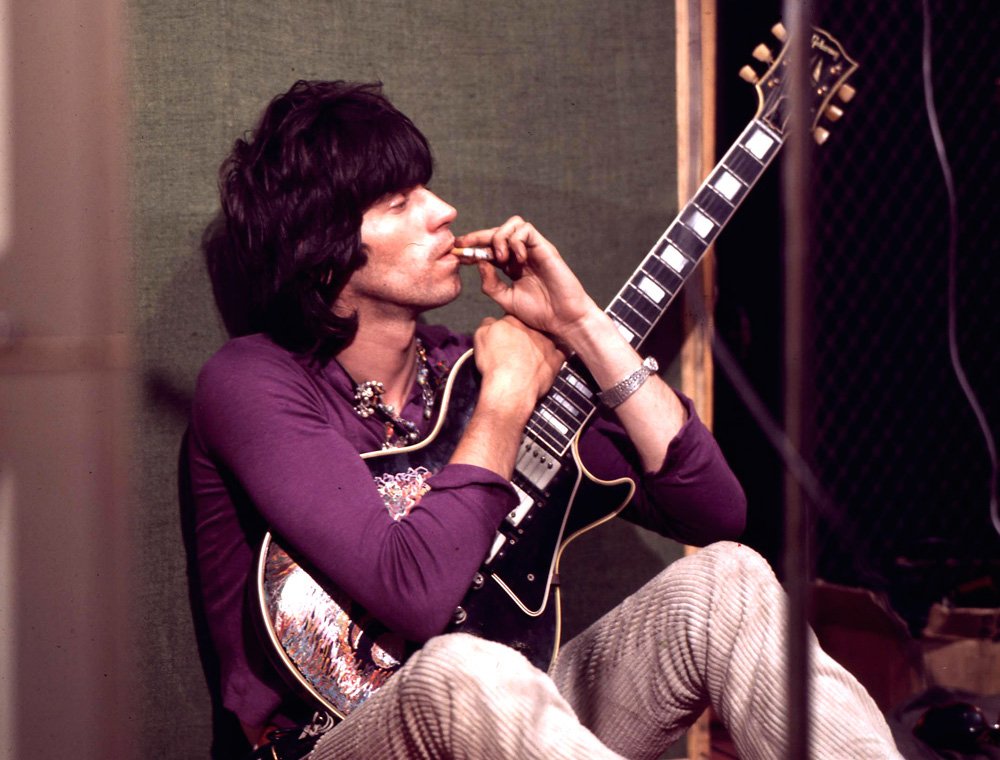
Late 50s Gibson Flying V
Another of Richards’ most famous instruments was his late 50s Gibson Flying V, which he played at the Stone’s iconic performance at Hyde Park in 1969. This was the band’s first appearance with lead guitarist Mick Taylor after the firing and subsequent untimely death of founding member Brian Jones. Richards owns many other Gibsons but is probably most associated with his Les Paul Juniors. Owning many Juniors in both the single and double cut varieties, Keith is most often seen with his TV Yellow Doublecut nicknamed ‘Dice’, which he acquired around 1971. Dice’s raw, stringy P90 sound can be heard on such Stones tracks as ‘Tumbling Dice’ (as you probably guessed) and on ‘Start Me Up’ in conjunction with a Telecaster.
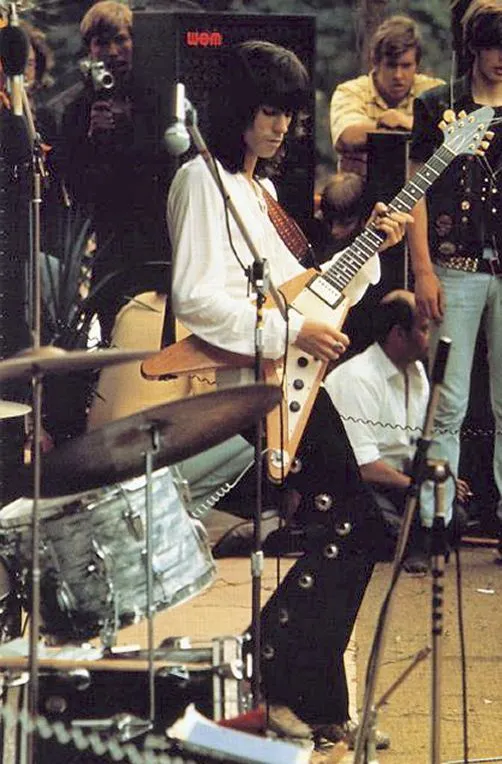
1969 Ampeg Dan Armstrong See-Through guitar
An oddball in Keith Richards’ guitar collection which he used to great effect in the early 70s was his 1969 Ampeg Dan Armstrong See-Through guitar. Made from plexi-glass rather than wood, the Dan Armstrong was known for having an incredible amount of sustain. Richards received one of the first prototypes of the model which he loved and used on the Ed Sullivan show in 1969, but unfortunately the guitar was also stolen from Villa Nellcote in the early 70s.
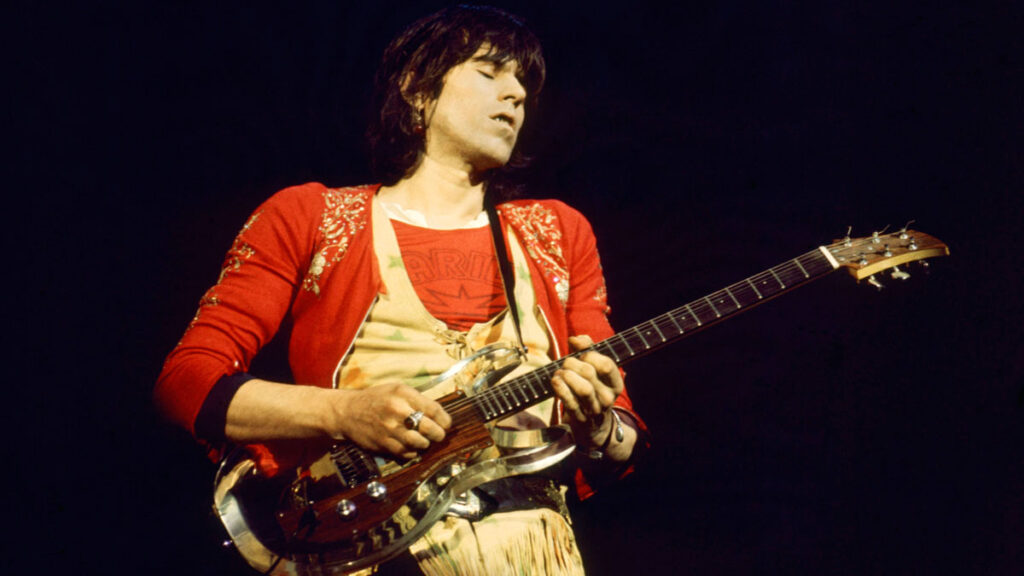
Amps
Fender Combos
Having spent some of the 60s using a Vox AC30, Richards ended up favouring American amps overall and is widely known for his collection of Fender combos. Perfect for his full yet chimey tone, sitting on the edge of breakup rather than becoming fully saturated, Richards has utilised Fenders such as a Dual Showman, a 1957 Fender Champ, a 1956 Fender Harvard and a 1958 Fender Twin.
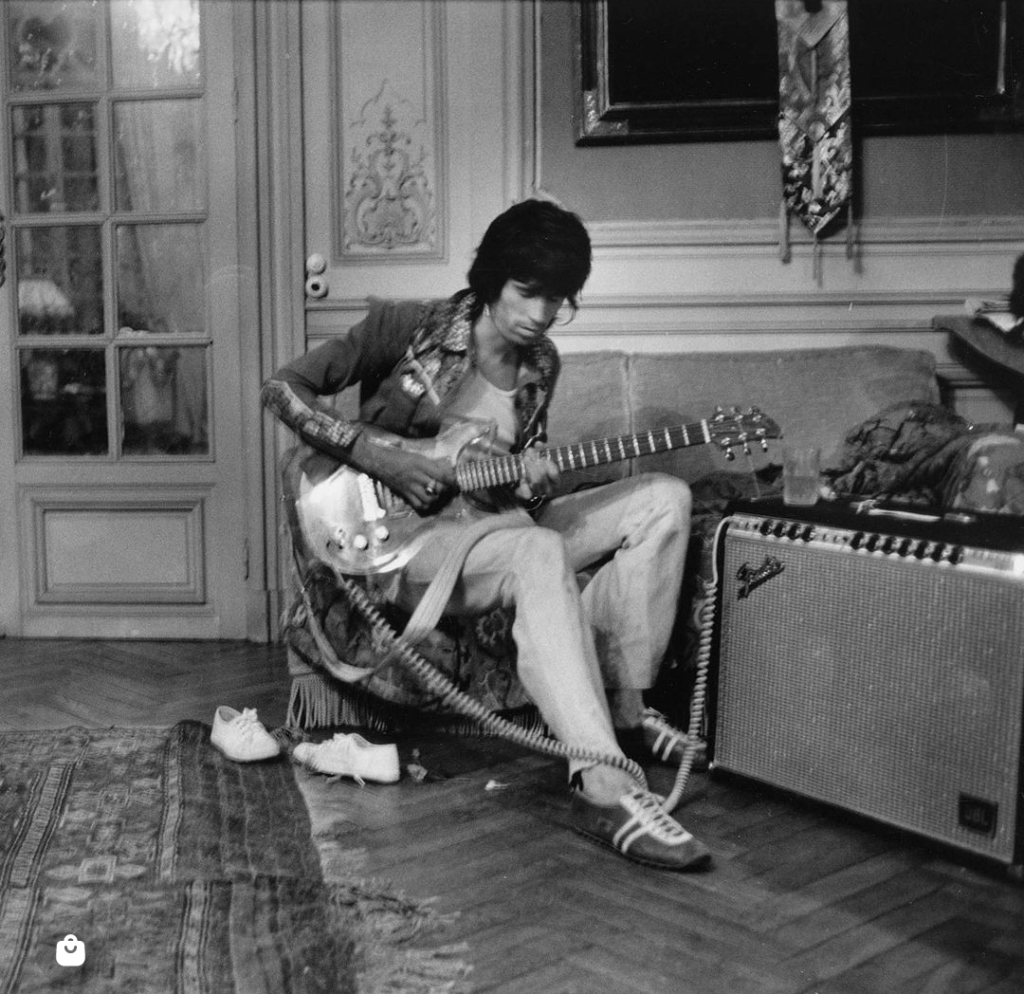
Ampeg Amplifiers
Aside from his Fenders, perhaps the height of Keith’s tone was the sound he pulled in the early 70s from his collection of Ampeg amplifiers. After receiving a sponsorship from Ampeg, the Stones fell in love with their crisp midrange bite and ample headroom. Keith most famously used these amps on the Stone’s infamous 1972 tour and also put them to fine use on ‘Exile On Main Street’, ‘Sticky Fingers’ and ‘Get Yer Ya Yas Out’. Included in his collection were an Ampeg VT-22, an Ampeg VT-40 and an Ampeg Gemini GV-22.
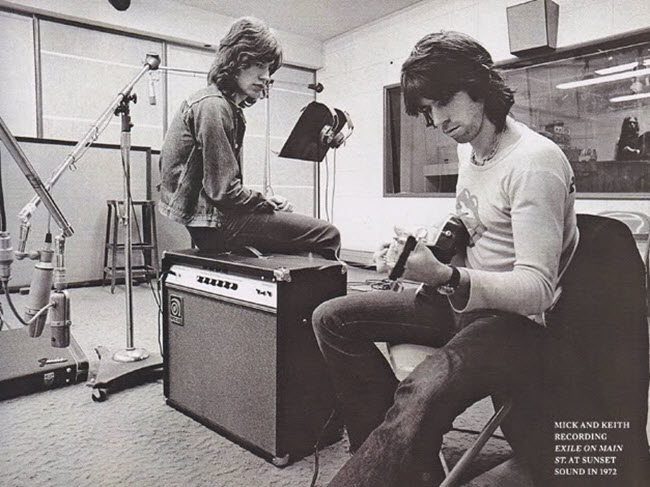
Effects
Ironically for a man who has outwardly rejected effects pedals ever since, Richards is responsible for the whole craze kicking off to begin with. His use of an extremely early fuzz pedal, the Maestro Fuzztone FZ-1, to emulate the sound of a horn section on ‘Satisfaction’ is one of the most famous tones of all time and inspired a generation of players to fuzz up their sound. But, Richards has stayed away from pedals since then, preferring to purely focus on what he does best. Writing riffs, creating space in arrangements, crafting beautiful tones full of clarity and edge and basically playing the best damn rhythm guitar in rock and roll.
Keep up to date with all things Rolling Stones here.
